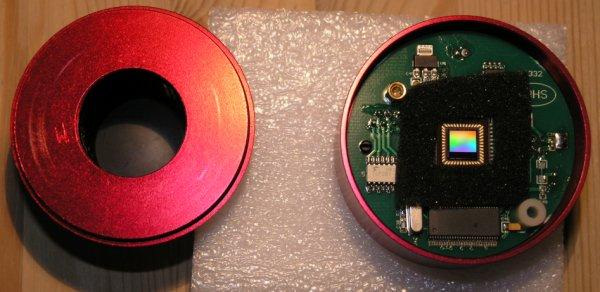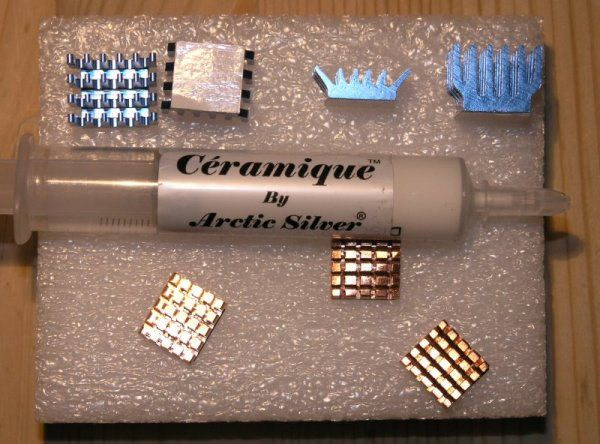Cooling solutions for QHY5
All of the QHY5 camera types are well known as an affordable guide cameras. For a low price we get guiders with ST-4 support and quite big for a guider sensors up to 1/2". Those cameras can also be used for Solar System imaging. QE is around 50% for mono and 30-40% for color Micron sensors. The only problem they could have is the noise and fixed pattern noise typical to Micron CMOS sensors. For most of the guiding cases it won't be a problem, but when you will need max gain and longer exposure to find faint stars in an OAG - it may be a problem. Also for DS/Solar System imaging with such cameras that noise isn't welcomed. Dark, bias and flat frames won't solve that completely. The basic thing we can do is to use passive or active cooling.
QHY5, 5t and 5v sensors don't have a heat sink so heat from the sensor can't be dissipated quickly. On thx8411 blog you will find a tutorial on making a heat sink for those cameras. Not all of them have the back opening. If they do - it easy, if not you can only make less efficient heat sing touching the board.
Heat sink in QHY5
Those cameras have simple housing. Just unscrew the whole front lid to access the camera board:
Next gently push the board from the opposite side pushing on the ST4 or USB board. You will get access to the back of the board and you will be able to mount the heat sink.
In my case I got some computer cooling equipment - RAM sticky heat sinks and ceramic heat conducting paste (doesn't conduct electricity):



The heat sink may not be too high or it won't fit in the housing. The one I used had a 1-2mm gap to the housing surface. I've put some paste on the housing so that the radiator ribs would be "connected" to the housing.
Such modification should decrease the noise and be sufficient in most cases. You can also try attaching extra heat sinks on the surface too:

Active cooling
If you want to cool the camera with a Peltier device you will have to use a weak one, as the sensor doesn't emit a lot of heat - around 350 mW of energy. So you need weak and small Peltier - 10x10 or 15x15 so it would fit on the housing between USB and ST4 port.
If the cooling will be strong, like 20 deg below ambient it's good to put some desiccant inside and lock the front with a 1,25" filter (clear, IR/UV cut or other).
For guiding active cooling won't be rather required. It may be useful when trying some DS imaging on sub-minute exposures.

Cooling effects
Below are darks made in home at 1 sec exposures and 100% gain. First is vanilla dark, second with heat sink and third with active cooling (external heat sink lying on a Peltier unit USB powered:
Comment article